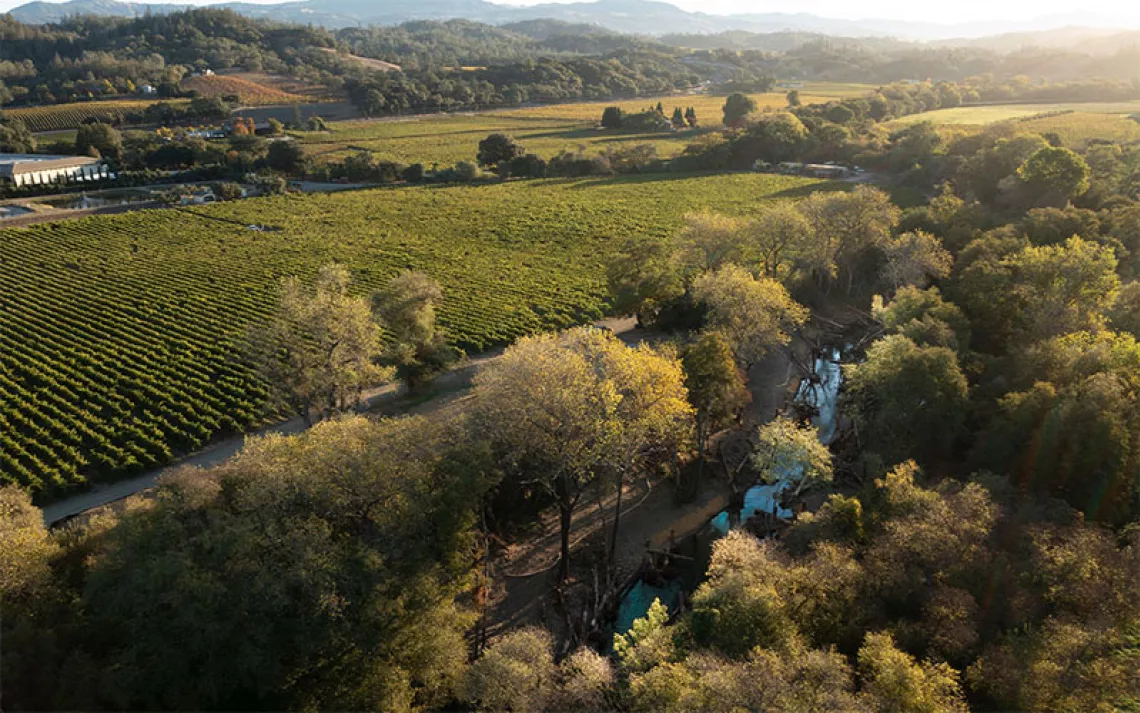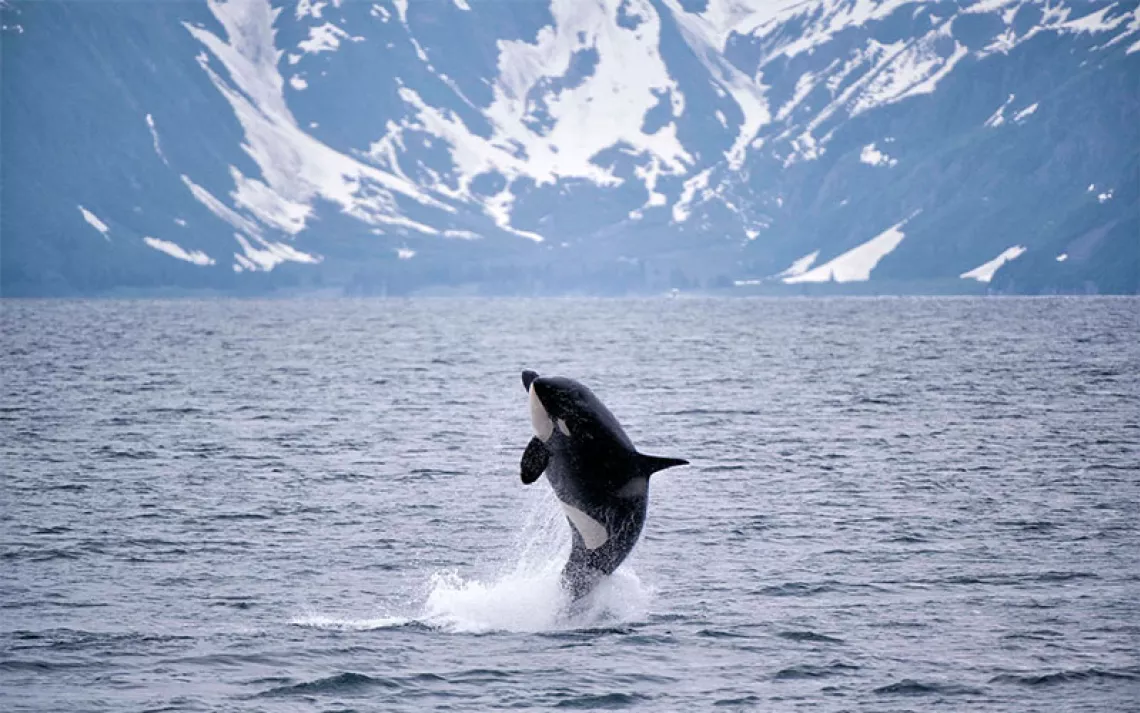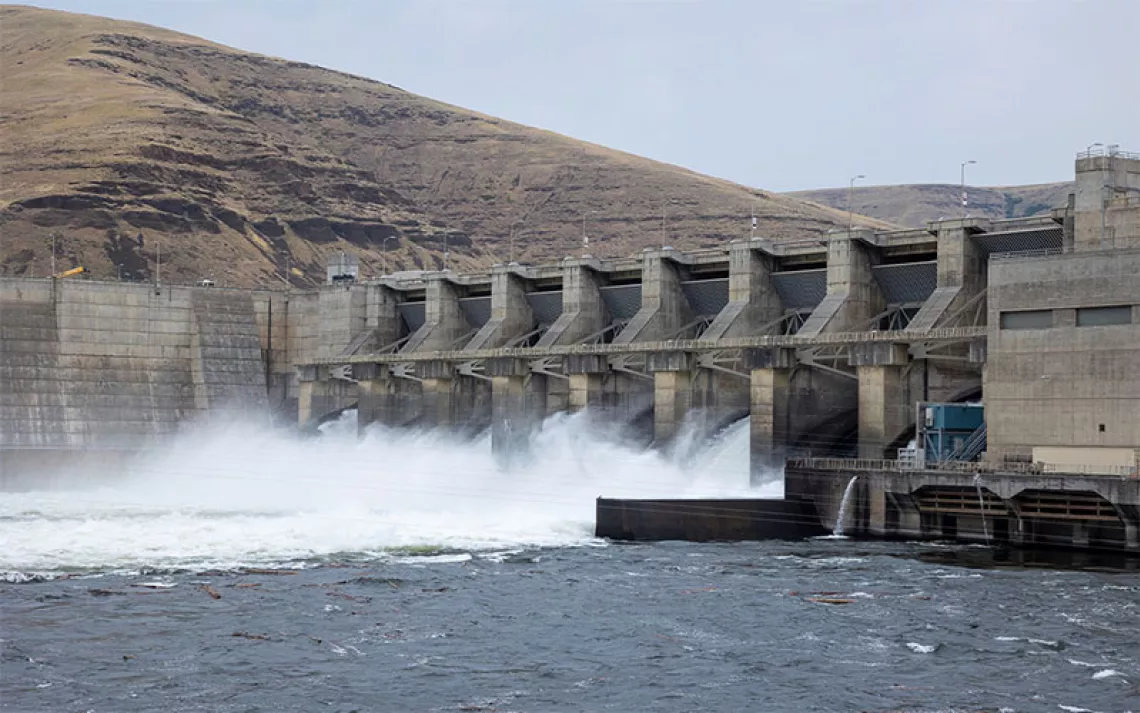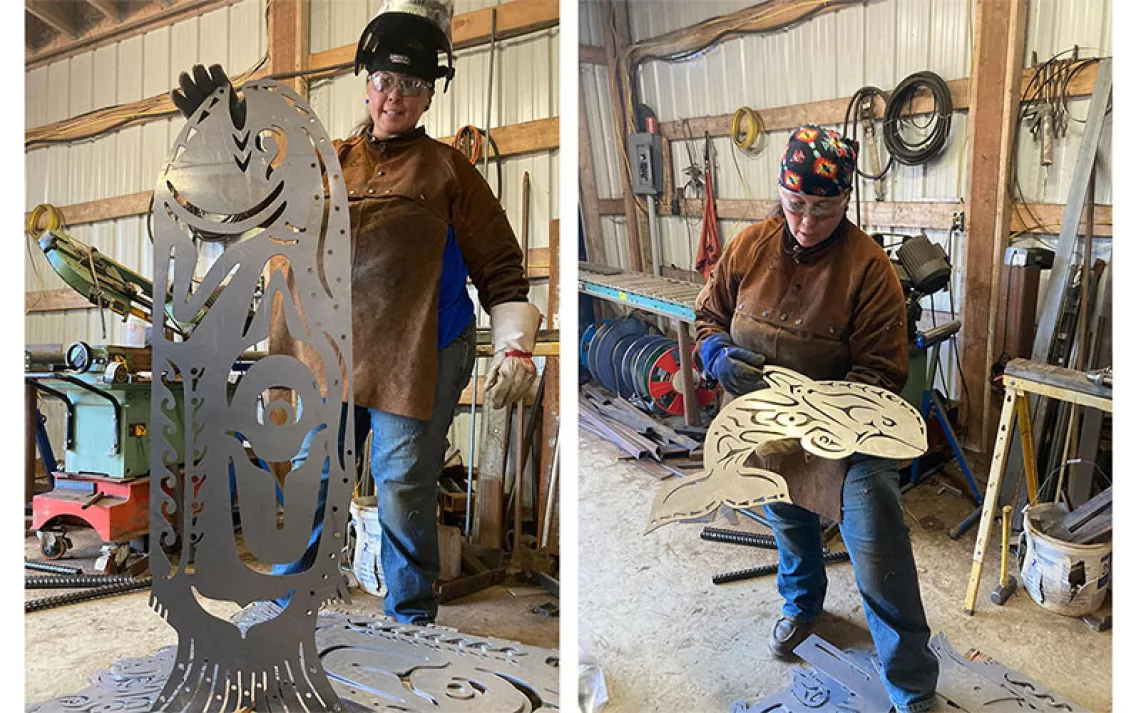Stars Align for Salmon Restoration on the Upper Columbia River
Generous funding from the White House speeds up the process by decades
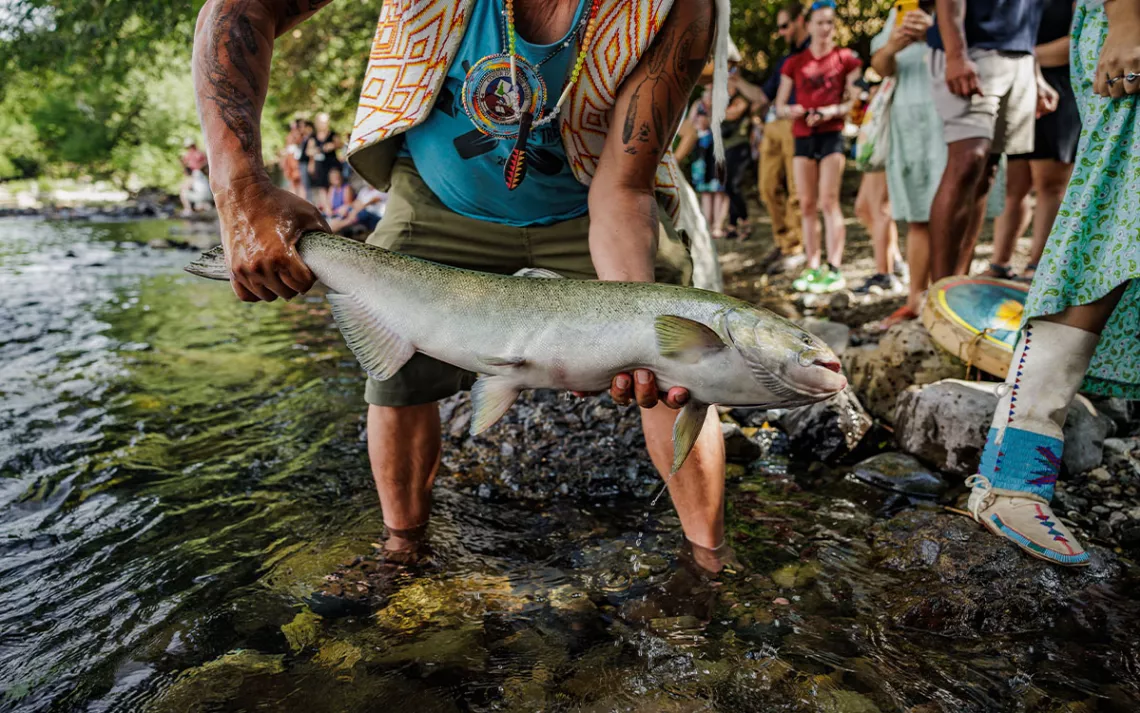
Adult Chinook being returned to the Spokane River in August 2022 after 110 years. | Photo by Nicolas James, Courtesy of Spokane Tribe
For millennia, tribes from across the Columbia Plateau gathered at Spokane Falls—“Stluputqu” in Salish, meaning “swift water.” At the celebration, in what is now the city of Spokane, Washington, an appointed Salmon Chief would oversee the harvest and distribution of salmon, ensuring that enough fish made it up the river to reproduce and that the rest of the catch was distributed evenly among everyone. But then came the settlers, industry, and dams, and the salmon disappeared.
There is now some hope of restoring salmon to the region. Last September, the Biden administration announced an agreement that would provide $200 million in funding over 20 years for the Upper Columbia United Tribes (UCUT) to reintroduce salmon populations back into the Upper Columbia region. The funding was part of a larger effort by the White House, which continued in February when the administration signed a $1 billion agreement with four Columbia River Basin tribes and the governors of Oregon and Washington to restore salmon to the Pacific Northwest.
The ramifications for the future of tribal culture and the tribes' connection to the land are extraordinary. “For the last 14,000 years, the Spokane Tribe, the salmon, and the river lived together as one—we are a true river people,” said Warren Seyler, a Spokane Tribe citizen and tribal historian. “Just like the buffalo was to the Plains Indians and the caribou to Alaskans, and other things to people around the world, salmon was our staff for life, giving us 60 to 65 percent of our food.”
At one time, Columbia Basin rivers and tributaries were filled with enormous runs of salmon, some weighing up to 60 pounds. But then came the 19th-century fish wheels that swept up salmon by the thousands for canneries from the Columbia River and downstream from Spokane Falls. With the construction of the impassable Chief Joseph and Grand Coulee dams in the 20th century, the salmon were cut off indefinitely from Kettle Falls and Spokane.
To make matters worse, as millennia of equilibrium with the salmon were undone in less than two centuries, the Spokane Tribe was forcibly removed from the river by the US government. Still, the tribes in the region never gave up on finding a way to get the salmon back.
“The tribe’s efforts to reintroduce salmon started right after Grand Coulee was constructed back in the 1930s,” said Brent Nichols, the fisheries and water resource director for the Spokane Tribe of Indians. “That blocked all passage of salmon to Spokane tribal waters.”
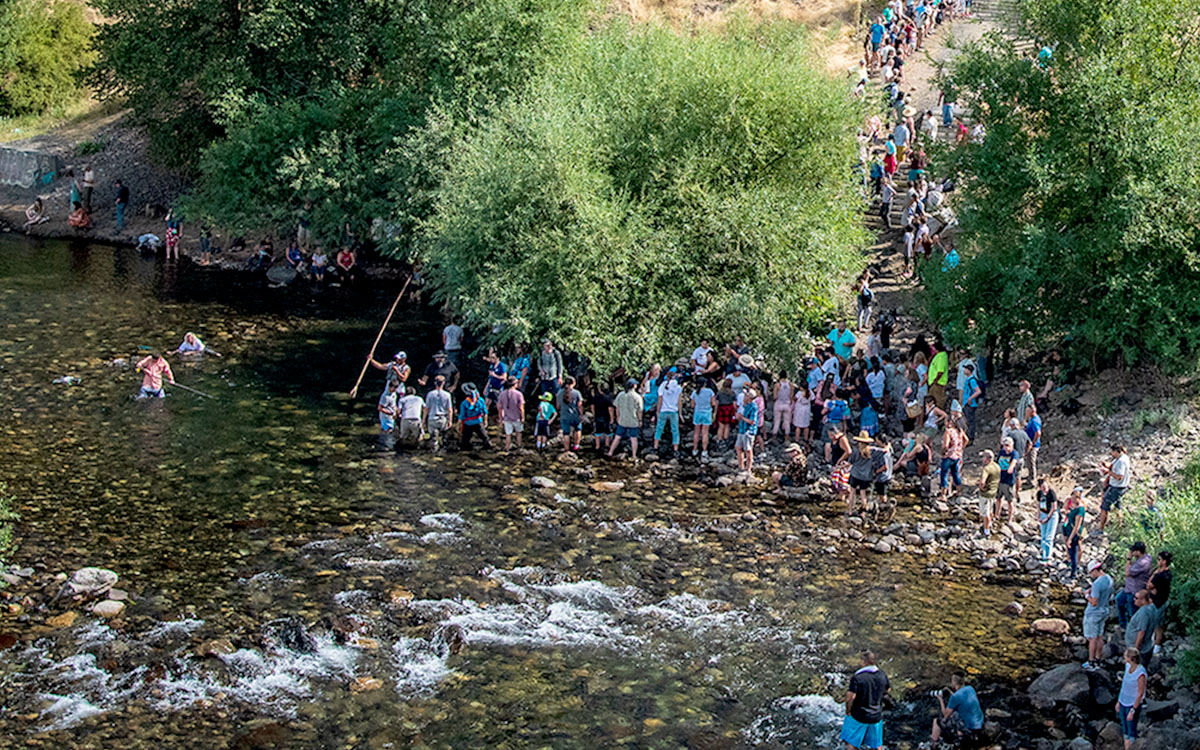
Reintroduction of anadromous Chinook salmon into the Spokane River: The fish were transported via a rubber boot and passed down the line from the tanker truck. Over 700 people—tribal, nontribal, and scientists from the American Fisheries Society— participated in the event. | Photo by Nicolas James, Courtesy of Spokane Tribe
The discussion of restoration picked up some steam when Spokane hosted the first environmentally themed world fair, Expo '74. There was a tremendous effort to clean up and restore the Spokane River from decades of railroad and the industrial pollution, and the city invited tribal representation at the fair. In 1983, the five tribes of the Upper Columbia formed UCUT to address the conservation and cultural needs of the Confederated Tribes of the Colville Reservation, Coeur d’Alene Tribe, Spokane Tribe of Indians, Kalispel Tribe of Indians, and Kootenai Tribe of Idaho.
In 2014, amendments to the Pacific Northwest Power Act language called for a science-based, multiphased approach to the restoration of salmon and steelhead. Phase 1, which was completed in 2019, was a pre-assessment for the reintroduction of salmon to the upper Columbia River Basin. All else equal, could the salmon still make their journey? Tagged salmon were tracked, and it was proved that even after a century’s absence, they were capable of going out to sea and returning.
During that phase, the Spokane Tribe also did cultural and educational releases of salmon, Nichols said. After a year of planning, the five UCUT member tribes came together in 2022 at People’s Park in downtown Spokane to release 150 adult Chinook salmon. “Those fish actually spawned,” said Nichols, adding that in spring 2023 “we had out-migrating juveniles.”
With this new funding from the White House, they are now in the two-decade-long Phase 2, which will explore experimental, pilot-scale salmon reintroductions and interim passage facilities. An eventual Phase 3 will focus on the “construction of permanent juvenile and adult passage facilities and support of propagation facilities.”
In other words, there is still a long way to go.
Initially, said Seyler, the idea of bringing the salmon back was a distant dream for their great-great-grandchildren. “As time went on,” he said, “things started getting faster. Soon it wasn’t our great-great-grandchildren. It was our great—and then our grandchildren. Now it’s our children that are already seeing them. So it’s been light-years faster than we could have dreamed at that time.”
That dream, of course, could easily be reversed within one presidency. During the Trump administration, EPA efforts to restore and clean up rivers in Washington, including the Spokane River, were turned back. The Biden administration overturned the former president’s decisions, but in December 2023, some businesses sued the EPA, hoping to weaken the water standards again. They would likely find sympathy from a second Trump administration.
It would be hard, though, to ignore the wide-ranging benefits that salmon and steelhead restoration would bring. It would be a cultural victory for UCUT members, enabling them to return to the practices of their ancestors. It would be an environmental benefit to restore the “keystone species” of salmon to serve as food for orcas, and to cycle nutrients back to waterways from the ocean. Then there’s the angler tourism and recreational value that comes with the return of salmon and the restoration of habitat. According to one study, “the total value of recreation in the [Columbia River Basin] under current condition scenario is $4.7 billion for general recreation, plus $140.9 million for salmon and steelhead angling.”
“What brings people together is having a common effort,” said Seyler, “and I’ve watched this fish issue bring enemies together. People that would never have fathomed that they would support the tribe and anything the tribe would ever do are now supporting its people and some of that because of monetary gain for them. But it’s bringing people together.”
 The Magazine of The Sierra Club
The Magazine of The Sierra Club
